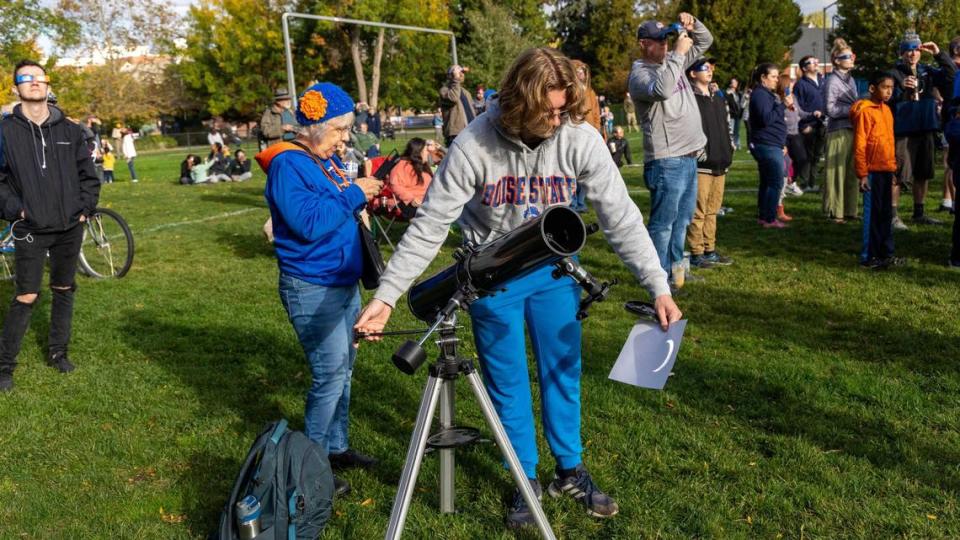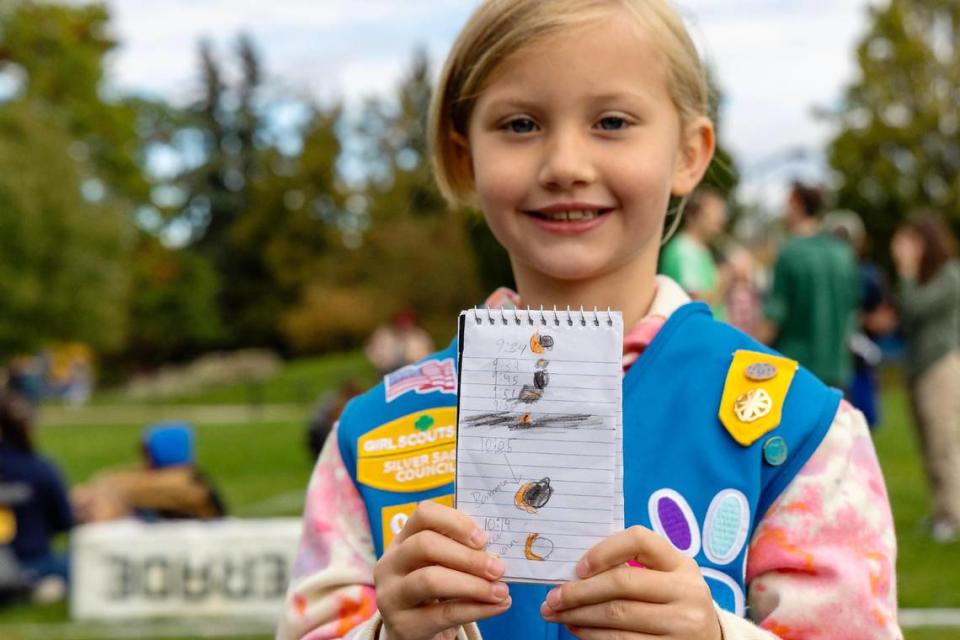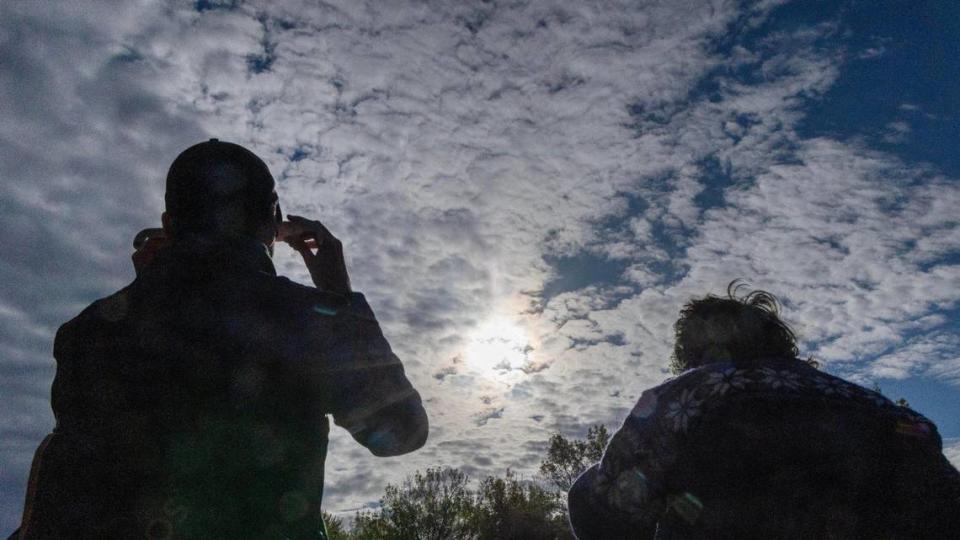‘Right at the right time’: Cloudy sky gives way for Boise sightseers to savor eclipse
Citizen scientists, hobby astronomers and casual skygazers united Saturday morning in Boise for a chance to view a celestial sight more than a decade in the making: an annular solar eclipse that emerged just in time from beyond the cloudy sky.
About 300 people gathered on the leaf-dotted lawn outside the student union on Boise State University’s campus at the eclipse’s peak to take in the moment. They each arrived for a glimpse of the so-called “ring of fire” effect at the height of the eclipse, when the moon blocked out the majority of the sun.
Many recall the total solar eclipse viewable in many parts of the U.S. in 2017, but Saturday’s annular variation — when the moon perfectly lines up with the sun, though is too far away from Earth to fully obstruct it — was the first seen in the U.S. since May 2012.
In Boise, the eclipse began at 9:07 a.m., reached its peak — when the moon blocked 85% of the sun locally — at 10:24 a.m. and ended at 11:47 a.m. The path of annularity was closer to 91% elsewhere in the Western U.S., including portions of Oregon, Nevada and Utah.
Boise State student Hunter Gregory, 19, stayed here and wasn’t going to miss the rare opportunity. The freshman engineering major, who said he has for some years enjoyed astronomy in his downtime, brought out his black Celestron telescope to the school’s intramural field, watched the passing eclipse and projected it onto a white sheet of paper.
“It’s so humbling,” Gregory told the Idaho Statesman as a crescent took shape nearly in the palm of his hand. “There’s a whole universe out there and it’s bigger than humanity.”

Others donned blue-and-orange paper glasses equipped with solar filters available on site — for a donation — to see the eclipse. Some held a lens from the glasses in front of the camera on their cellphones to capture a lasting keepsake.
At points along the eclipse’s path, Dylan Watson, 7, of Boise, said she thought the sun looked like a banana. Dylan, sporting a sky-blue vest for Girl Scout Troop 981, was joined by her mother, Austin Watson, who helped her daughter time out five-minute intervals to record what she saw in a hand-held field journal. Dylan said she hopes to one day become a scientist.

Earlier in the morning, Brian Jackson, associate professor in Boise State’s physics department, led a presentation on solar eclipses. He explained that annular eclipses actually occur less frequently than the total solar eclipses that tend to get a little more attention.
Boise was fortunate to fall within the eclipse’s path this time around, he told the Statesman in an interview — despite morning weather that didn’t completely cooperate.
“We got lucky with this,” Jackson said, “just not with the clouds.”
Even so, almost as if on cue, the sun broke free from the veil of overcast eastern sky for the key point of the eclipse’s peak, which had inspired Treasure Valley residents to come out for the cosmic event.

John Wheeler, of Meridian, talked his 9-year-old son Jacob out of bed this morning to take a chance at observing the sight. A short trip to BSU’s campus beat waking at 4 a.m. and driving some 4 1/2 hours to the southwestern tip of Idaho to be closer to the solar eclipse’s path, where the moon more fully blocked the sun, as his father had offered.
“I’m not a morning person,” Jacob Wheeler said, nodding yes that he was glad he joined.
John Wheeler said he caught the total solar eclipse of 2017 from Black Canyon Reservoir near Emmett, which he called a “once-in-a-lifetime moment.” Jacob was there, too, but he was just 3 years old at the time and said he couldn’t recall the experience.
Unable to find his eclipse glasses from that day, John Wheeler planned ahead and ordered new ones before Saturday’s annular version. The two sat on the intramural field in lawn chairs they brought from home and together watched as the sky opened up and delivered another eclipse to remember.
“We didn’t know what we’d see,” John Wheeler said, acknowledging concerns about the cloudy forecast. “But it cleared right at the right time.”

